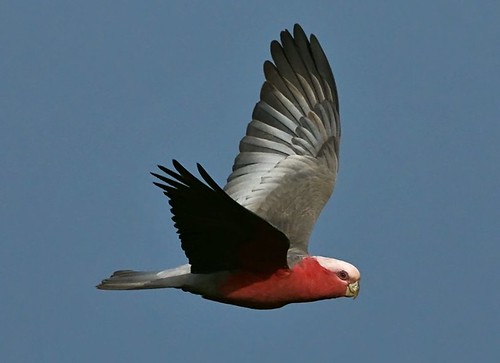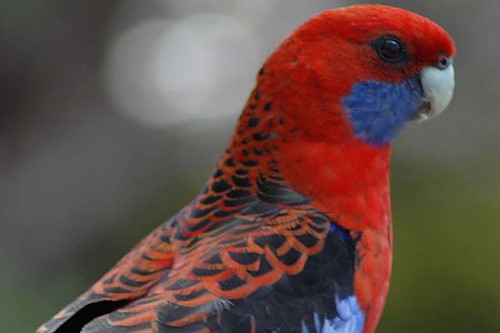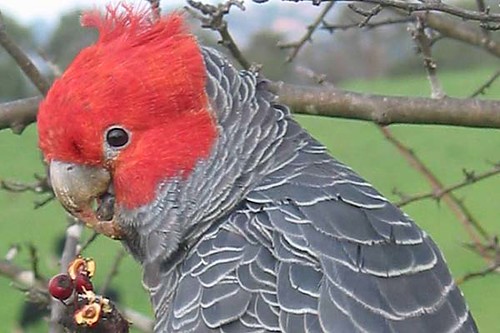Parrots better than beaches for tourism?
 Wednesday, August 3, 2011 at 1:50
Wednesday, August 3, 2011 at 1:50  We might take them for granted, but galahs could be potential tourist attractions. Photo: David Cook
We might take them for granted, but galahs could be potential tourist attractions. Photo: David Cook
Australia should forget beaches and bikini-clad models as tourist drawcards, and promote the country as a land of parrots to rival the Amazon, a leading tourism expert says.
Griffith University eco-tourism research centre director Professor Ralf Buckley said Australia was "clueless" about promoting its wildlife to a profitable overseas market for environmental tourism.
Global tourism trends show bird watchers are among the worlds highest spending tourists, paying upwards of $10,000 for off-the-track tours led by experts.
Professor Buckley said Australia was much safer than some politically volatile and remote South American parrot-watching spots.
"We are truly clueless in marketing our wildlife. We should promote our large, brightly coloured birds. Overseas visitors are blown away by the brilliant colours of our parrots," he said.
And two of the worlds leading experts on parrots and cockatoos, Canberra residents Joe Forshaw and Denis Saunders, say the ACT should market its birdlife as a major tourist attraction.
Mr Forshaw, the former head of wildlife conservation for the Australian National Parks and Wildlife Service, is the author of 17 ornithology books including a guide to the worlds parrots.
"I've taken parrot tours around the world, and they're a huge attraction. In Peru and Costa Rica, there are entire communities built around parrot tourism," he said.
In Canberra, Mr Forshaw has hosted visitors from Europe and the United States who were enthralled by gang-gangs, crimson rosellas, king parrots and flocks of galahs. "We take galahs for granted, but to overseas visitors their colours are remarkable."
 Could rosellas be Australia's next tourism drawcard?
Could rosellas be Australia's next tourism drawcard?
Dr Saunders, a former CSIRO chief research scientist who identified two new species of West Australian cockatoos, has taken visitors to local parks to see yellow-tailed black cockatoos, eastern rosellas and gang-gangs. More than a dozen parrot species are found in Canberra, and many are on "the life lists", or wish lists, of overseas bird watchers, he said.
 The ACT's beloved faunal emblem, the Gang Gang cockatoo.
The ACT's beloved faunal emblem, the Gang Gang cockatoo.
Mr Forshaw said early maps used by spice traders to the Dutch East Indies showed a southern land mass known as Terra Psittacorum, the Land of Parrots.
"Many of the ships brought parrots to take back to Europe, and were told by local merchants of a southern land that was full of parrots. That was Australia."

